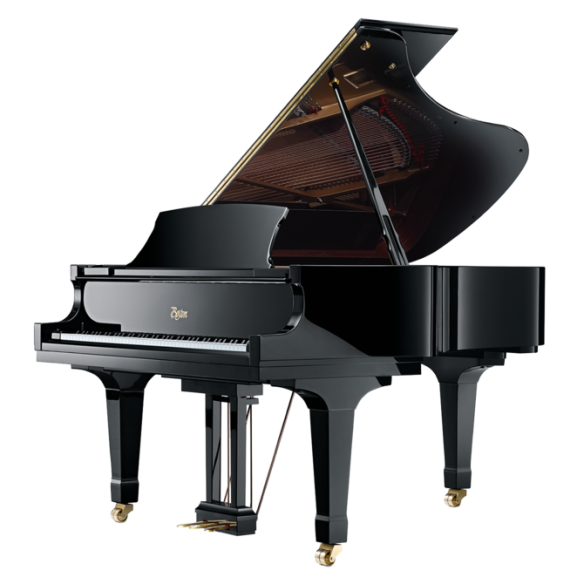All Boston grand pianos have duplex scaling – one of the most famous inventions by Steinway & Sons, which provides a full, balanced and especially long-lasting tone. The duplex systems installed in the cast iron plate provide a rich array of overtones and harmonic diversity.
In order to meet the highest quality standards, only the finest Sitka spruce is used to build the Boston’s soundboard – wood with a straight grain and a defined minimum number of annual rings per centimeter. Based on the design of Steinway & Sons in 1936, the Boston soundboard is not uniformly thick, but tapers toward the ends. This allows it to vibrate more freely and generate a fuller sound.
In addition, each Boston grand piano features extended housing, no matter what its size. This is an innovation by Steinway & Sons that makes it possible to widen the rear of the housing. Compared to other instruments of the same length, Boston grand pianos therefore have a much larger soundboard. For example, a Boston grand piano measuring 178 cm can be fitted with a soundboard that would normally be used for a standard grand piano measuring 189 cm in length.
A range of Steinway patents and designs were incorporated into the construction of Boston at the outset. In 2009, the introduction of the revised Boston Performance Edition heralded a number of extraordinary innovations, two of which are of particular importance. The rim of the Boston clearly bears the genetic fingerprint of Steinway & Sons. While the outer rim consists of several layers of mahogany, only maple is used for the inner rim. As a result, the housing is not only more stable, but it also offers a much more pleasant sound – the fundamental goal of the Steinway system. In efforts to optimize the new generation of Boston grand pianos, engineers came up with the patented Octagrip pinboard, whose design is based on the Hexagrip pinboard principle conceived by Steinway & Sons. This feature can only be found on Boston pianos.
Fine woods provide the Boston pianos with a beautiful shell: walnut and mahogany will impress those who want an alternative to traditional black or white – after all, Boston pianos should provide their owners with joy for the eyes as well as the ears.


